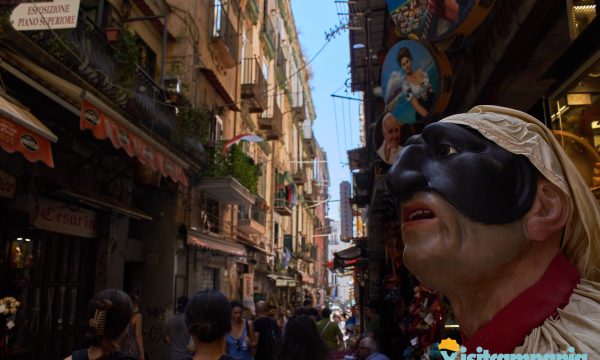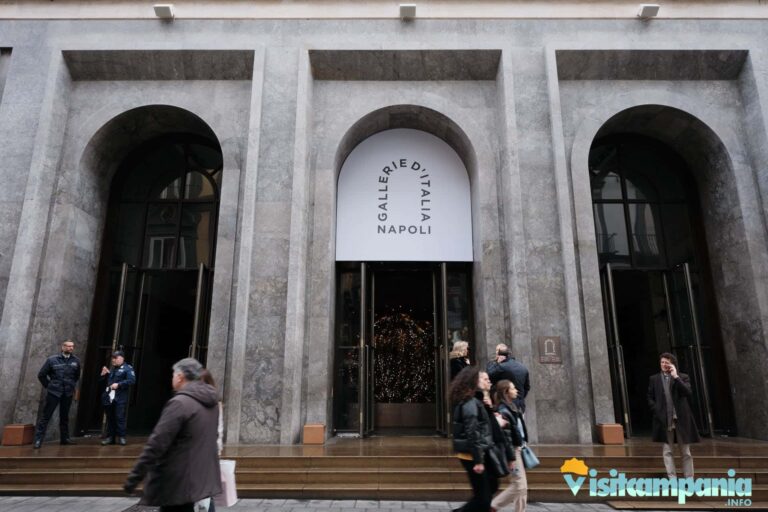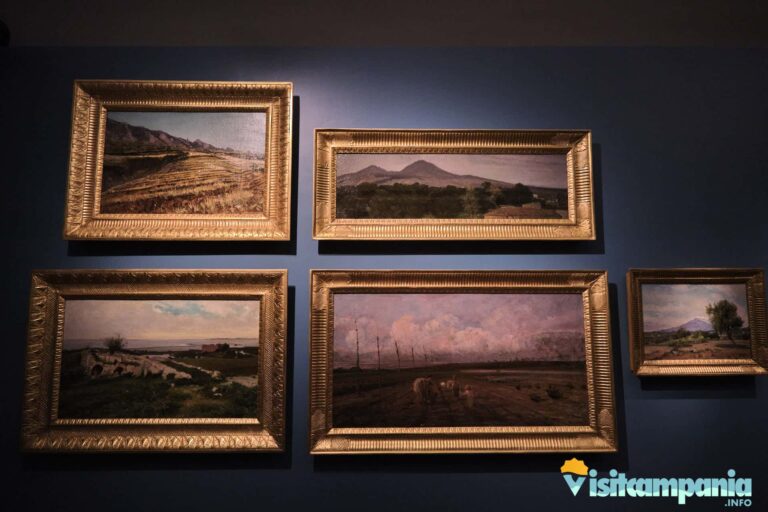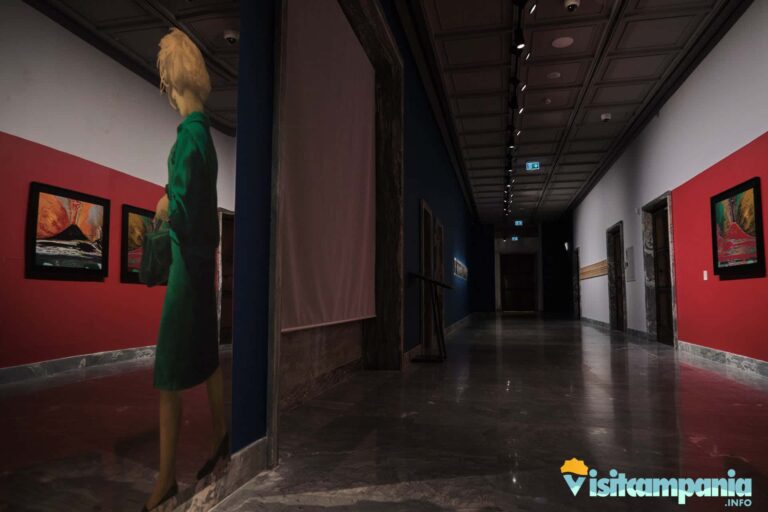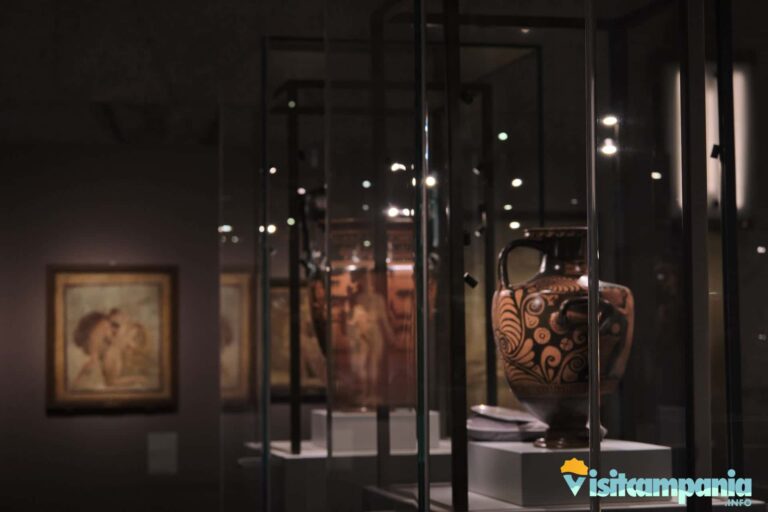The Italian Galleries project
Italian Galleries is a project of the Intesa Sanpaolo banking group that consists, among other things, in the construction of four large exhibition areas in Naples, Vicenza, Milan and Turin. The project started in 1999 with the opening, in Vicenza, of the first galleries. In 2007 the Neapolitan museum was born, housed at the Palazzo Zevallos Stigliano in Toledo street. On May 21, 2022 the museum moves to the new headquarters at the monumental building of the former Banco di Napoli always in Toledo street.
The new Italian Galleries of Naples are designed by Michele De Lucchi, an internationally renowned architect and designer, and are set up according to modern and innovative museological and museographic criteria testifying to the importance Intesa Sanpaolo attaches to the project, conceived not only as a static exhibition space but also as a place for learning and meeting.
The palace of the Banco di Napoli
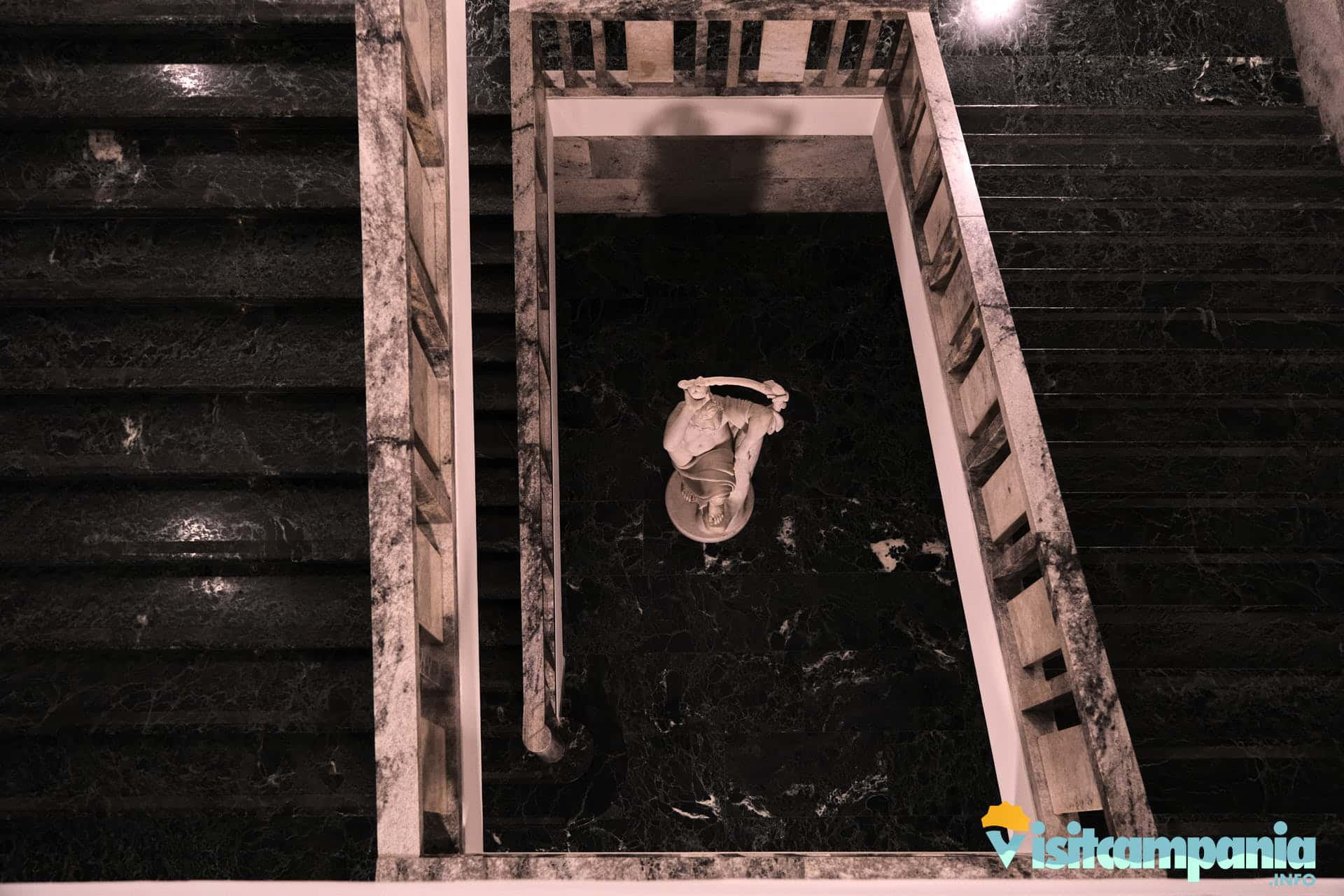
Before entering and entering the halls of the muzzle it is right to spend a few words on the new headquarters. The palace, in reality, is not new but brings back to ancient splendor a building whose first construction dates back to 1819 and housed the Ministries of the Borboni kingdom. The current structure is due, instead, to the works of expansion and separation from the Town Hall carried out in 1939 under the direction of the architect Marcello Piacentini. Further, marginal works date back to 1986. Of particular interest is the marble staircase leading to the upper floors.
Inside the building, accessible from Via Toledo and independently of the visit to the Galleries, there are also a coffee shop and a bistro that Intesa Sanpaolo has entrusted to the management of the chef, two Michelin stars, Giuseppe Iannotti. The same chef will also be entrusted with the management of thelounge bar and the restaurant soon to be open on the panoramic terrace. There is, of course, a bookshop always with free admission.
Collections and temporary events
The muzzle houses threepermanent collections, all of the highest artistic and cultural interest:
- from Caravaggio to Gemito;
- the twentieth century;
- Attic and Magna Graecia ceramics;
In addition to the permanent collections, the museum organizes, with a busy schedule, high-profile events and temporary exhibitions that always make the museum itself attractive and insert it as a living body in the social and cultural fabric of the city.
From Caravaggio to Gemito

This collection, exhibited on the first floor, brings together works related to Naples and the south of Italy made between the seventeenth and early twentieth centuries. The most famous work is the Martyrdom of St. Ursula made by Caravaggio in 1610, a few weeks before his death. However, it would be a serious mistake to consider the rest of the collection as pure outline. The works of Artemisia Gentileschi, Battistello Caracciolo, Gerrit van Honthorst cannot fail to attract the visitor painting by painting. And then the views and landscapes of Anton Sminck van Pitloo and Gaspar Adriaensz van Wittel open up glimpses of time on places now modified by time and man. You get to border almost on impressionism with absolute masterpieces such as Seduction of
The twentieth century

On the second floor is the exhibition on the twentieth century. Curated by Luca Massimo Barbero, it presents works by well-known artists active between the second post-war period and the present day , preserving the link with the city and the south already seen in the collection from Caravaggio to Gemito. Among the most popular artists are Mario Schifano, Lucio Fontana and Piero Manzoni.
Attic and Magna Graecia ceramics

Also on the second floor, the famous Caputi Collection started in the nineteenth century by Archdeacon Giuseppe Caputi is exposed to the public. It consists of over 500 vases and other finds from Ruvo di Puglia, in the province of Bari, which was an important economic and cultural center of Magna Graecia. The dating of the pieces is between the sixth and third centuries BC. and these are, for the most part, objects used in the funeral objects of the aristocracy. The highlight of the collection is the Attic Kalpis of the Leningrad Painter, a crater attributed to an Attic ceramographer, despite the name, active in the fifth century BC.
Italian Galleries of Naples, the Museum that welcomes you

At the end of the presentation of the Galleries, we cannot fail to emphasize the modern and welcoming aspect that emanates from the structure. From the kindness of the staff to the absence of architectural barriers, everything invites you to enter and immerse yourself in the splendid collections. Finally, a mention of merit on the institution’s website. Clear and full of useful information, it allows the purchase of tickets online and presents, which is quite rare, a photo gallery of all, or almost all, of the works on display to entice the future visitor.
To learn more
- Official youtube channel of the Gallerie d’Italia Napoli;
- Italian Galleries of Naples byTg3 (video);
- The Martyrdom of St. Ursols, Caravaggio (video);

